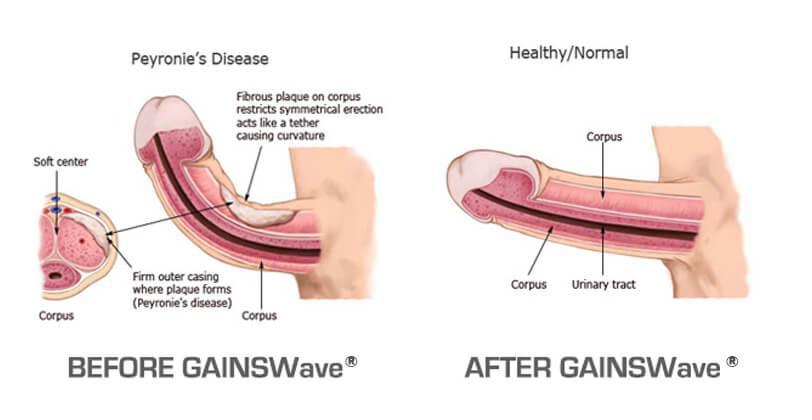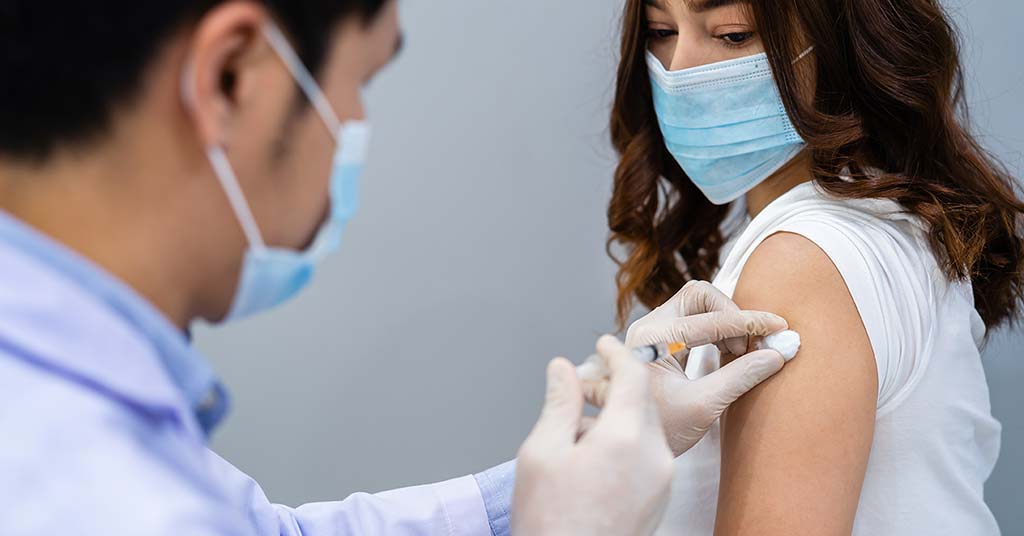Blog
Men’s Sexual Health: Understanding The Causes Of Peyronie’s Disease
Peyronie’s Disease: Causes, Symptoms, & Treatments
Men are often reluctant to discuss sexual problems out of embarrassment, fear of being thought of as less than manly, or simply because they don’t understand what’s happening. Ignoring issues, however, can lead to erectile dysfunction, emotional distress, embarrassment, and can even cause irreparable damage to intimate relationships. Experts believe that 9 percent of men are afflicted with Peyronie’s disease, and although it can occur at any age to men of any race, it’s most common in men who are middle-aged.
What is Peyronie’s Disease?
Peyronie’s disease is characterized by a fibrous scar tissue that forms beneath the surface of the penis. This scar tissue makes it problematic for men to have a normal, straight erection, and those afflicted, experience a painful curvature of the penis. This curvature often makes intercourse painful or impossible.
It’s important to note that penises come in all shapes and sizes and a curved erection can be perfectly normal. However, Peyronie’s may be present when the curve causes pain or affects sexual performance.
Signs & Symptoms
The signs and symptoms might come on suddenly, but they may also develop over time. Regardless of the speed at which Peyronie’s disease symptoms are noticed, the most common include:
- Scar Tissue Build-Up: A man may notice hard lumps or bands of tissue under the skin of his penis.
- Significant Penis Bend: Men with Peyronie’s observe their penis taking on an unnatural and severe curve or bend, with, or without, an erection.
- Misshapen Penis: Sometimes, the erect penis may narrow, indents may appear, or it may take on an hourglass shape.
- Penis Shortening: Some men note that the length of their penis is reduced when Peyronie’s is present. Penis Pain: Peyronie’s can cause a man to experience penile pain whether he has an erection or not.
- Erectile Dysfunction: A man with Peyronie’s may experience problems getting, or maintaining, an erection.
What Causes Peyronie’s Disease?
Unfortunately, the exact Peyronie’s disease?cause is still unknown. However, it is frequently brought on by some sort of trauma. When a normal penis becomes aroused, blood rushes in and fills its chambers. The elastic tissue alongside these chambers acts as a protective sheath and allows for a full erection. When the sheath becomes damaged due to trauma, hard scar tissue called plaque – essentially a buildup of collagen – forms and causes inelasticity. Without the required flexibility, the penis creates a curvature, or bend. Generally, Peyronie’s disease causes are brought about by things like:
Acute Injury:
If a man hits his penis very hard, or bends it because of an accident, it can cause an acute injury. Likewise, vigorous sexual activity, and bending of the penis during penetration, or by his partner’s pubic bone, are common causes. He may, or may not, realize he’s hurt himself immediately as the pain may go away quickly.
Chronic & Repeated Injury:
Certain athletic activities, such as bicycling or horseback riding for long periods, can cause repeated injury to a man’s penis. Since they involve a great deal of sitting, pressure, and jolts to the groin area, they can cause Peyronie’s to develop over time. As with an acute injury, the man may not realize the damage until symptoms appear.
Autoimmune Disorders:
Some experts believe that autoimmune diseases that affect connective tissues may lead to Peyronie’s disease. If the immune system attacks cells inside the penis, it can lead to inflammation, scarring, and severe curvature.
Family History:Men who have close relatives with Peyronie’s disease may also be at risk for developing it themselves. While it may be an uncomfortable conversation to have, it’s wise to ask your father, brother, uncle, and grandfather if they also experience a painful curvature of the penis. This information can help both you and your doctor manage the disease more easily.
Age:
Sexual performance naturally declines as a man ages with changes in hormonal levels and elasticity of penile tissue. The inclination towards Peyronie’s also increases, affecting men who are over the age of 55, more often than their younger counterparts. If he smokes, consumes alcohol, ingests certain drugs, has had prostate surgery, or other health issues are present, a man’s risk is even greater as he ages.
Peyronie’s Disease Treatment Options
If you are experiencing pain or penis curvature, it is important to seek care from a healthcare provider, especially if it prevents you from having sexual intercourse or healthy intimate relationships. Your healthcare provider will begin by reviewing your medical and family history in addition to a physical exam in which he or she will examine your penis for signs of plaque. If a physical exam fails to produce evidence of plaque, or your healthcare provider would like to pinpoint the exact location of the plaque buildup, imaging tests such as an X-ray or ultrasound may be required. Common recommendations for Peyronie’s disease treatments could include:
A Wait-and-see Approach:
In some instances, Peyronie’s disease clears up on its own, though often some sort of treatment – at least some sort of pain relief, in the short term – is necessary. If there aren’t severe symptoms or discomfort, a doctor may decide to first wait before doing anything else.
Making Lifestyle Changes:
Some studies suggest that Peyronie’s disease could be made worse if men have certain habits, including smoking, drug use, and alcohol consumption. Cutting back on these things or eliminating them entirely – along with exercising more and eating right – could help with the condition.
Prescription Drug Treatment:
Medication focuses on reducing plaque to reduce the penis curvature and overall pain. While very expensive, collagenase is the only FDA-approved medication for Peyronie’s disease and is injected into the scar tissue to help break it down. While clinical trials prove it can help to reduce the curve, this medication can cause severe side effects including penile fractures, allergic reactions, bleeding, swelling, itching, erection problems, and painful sex.
Surgery
Surgery is recommended only in long-term Peyronie’s disease cases in which severe penis curvature is present and non-invasive treatments fail to work. The most common surgeries include a penile implant to help sustain an erection and straighten the penis, grafting to cover openings in the tunica albuginea once scar tissue is removed, and plication in which a surgeon pinches or removes a piece of tunica albuginea on the opposite side of the plaque to help straighten the penis. These surgeries have risks including shortening, numbness, or you could lose your erectile function.
Vacuum Devices:
Vacuum devices attempt to stretch and bend the penis to regain a normal shape through mechanical traction. It requires daily use, over the course of several months, through the use of an at-home, inflatable vacuum cylinder. While vacuum devices can provide small improvements to penis curvature, they are unable to provide significant improvements in men with moderate to severe penis curvature, and men who experience erectile dysfunction in addition to Peyronie’s disease.
A Natural Solution With Extracorporeal Shockwave Therapy®
Fortunately, if you’re searching for a more natural, non-invasive treatment for Peyronie’s disease, Extracorporeal Shockwave Therapy can help. Peyronie’s disease is treatable, and most men are able to return to optimal sexual performance after therapy.
This treatment uses a premium brand of high frequency low-intensity shockwaves, or soundwaves, to break down scar tissue (plaque) and open blood vessels and create new ones. This increases blood flow, reduces the curvature of the penis, and corrects any potential erectile dysfunction.

Extracorporeal Shockwave Therapy is one of the only drug-free, surgery-free therapeutic options for men with Peyronie’s disease that has proven its effectiveness in clinical trials.
“The use of LI-ESWT in [Peyronie’s disease] has been reported since the late 1980s” and recent?research?published in?Translational Andrology and Urology?found that this type of treatment can help reduce both curvature and pain. The authors concluded that “LI-ESWT remains a useful and valid minimally invasive treatment option for men with PD who have failed with conventional medical therapy and are not keen to undergo surgical intervention.”
For more information on overcoming Peyronie’s?disease, watch our Medical Moment webinar featuring Urologist, Dr. Brandeis.
‹ Back






